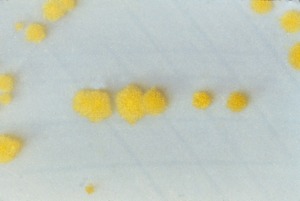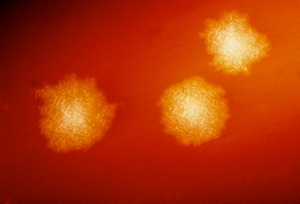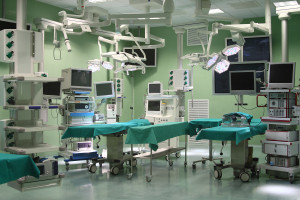Overview
To ensure that your patients are receiving the best treatment, care, and outcome, Altapure should be a key component in your fight to eliminate hospital acquired infections (HAI).
Altapure can assist healthcare and nursing home facilities combat acquired infections (HAI) by offering many defining benefits:
- Fast treatment time (Less than 45 minutes, start to finish, for common patient room).
- Clinically proven “No Growth” on ALL treated room surfaces for: Virus, Vegetative Bacteria, & Bacterial Spores.
- Gas-Like Interaction / 3-D Contact With Complex Surface Geometries.
- Safe - only 0.88 % H2O2 and 0.18 % PAA (Yes, the hydrogen peroxide is that low).
- Residue-free.
- “Extremely thin film” deposition with sub-micron droplet performance.
- Multi Room Capable - Able to treat connected areas & bathroom at same time.
- Complete Coverage Accuracy (no human interaction).
- Complete Coverage Reproducibility (no human interaction).
- Fully automated & remotely controlled process.
- Easily moved and setup by only one (1) individual.
- Wireless control and data reporting to PC.
 The Need For Altapure's AP-4 HLD System
The Need For Altapure's AP-4 HLD System
The global health care industry is challenged with preventing infections from being acquired within its facilities. Current methods used to prevent hospital acquired infections (HAI) have proven to be inadequate as 4.5% of hospitalized patients in the United States develop hospital-acquire infections (HAIs = nosocomial infections), resulting in more than 100,000 annual deaths and adding $35.7–$45 billion to healthcare costs. [30, 31, 34] [1-2]
Furthermore, patients with HAI have longer length of stay (LOS; 21.6 vs 4.9 days), higher readmission rates within 30 days (29.8% vs 6.2%), and greater mortality (9.4% vs 1.8%).” [32] [34] The consequence is increased pressures on healthcare providers both in terms of internal costs resulting from loss of government reimbursement as well as an increased risk of litigation and criminal liability.
Many of these infections are attributed to surface contamination. According to Rutala et al. (2010), studies show that patients hospitalized in rooms previously occupied by individuals infected or colonized with Methicillin-resistant Staphylococcus aureus (MRSA), [58] Vancomycin-resistant Enterococcus (VRE), [59] or Clostridium difficile (C. diff / CDF / C-diff) [60] are at significant risk of acquiring these organisms from contaminated environmental surfaces. [62] For example, Shaughnesy et al. (2011) stated that room assignment has been shown to be important in the acquisition of hospital-acquired infections, with a 40% increased risk of acquiring Methicillin-resistant Staphylococcus aureus (MRSA) and Vancomycin-resistant enterococcus (VRE) infection when the previous room occupant was positive. [27] [29]
Multiple studies have documented that housekeepers often do not clean surfaces as recommended [67-71][75], and standard methods of cleaning and disinfecting surfaces in hospitalized patient rooms are often suboptimal. [50-51][54] For example, according to Drees et al. (2008), it is well known that Vancomycin-resistant Enterococcus (VRE) colonizes environmental surfaces and equipment, and may persist for prolonged periods despite routine cleaning [88-89] [90].
The presence of even low amounts of biological surface contamination within the healthcare environment should also be of concern, since, according to Sitzlar et al. (2013) given the low inoculum of spores required to produce disease in antibiotic-treated animals, and the demonstration that spores on surfaces can easily be acquired on hands, [42,43] the goal of their intervention was to achieve consistently negative cultures from high-touch surfaces after cleaning of Clostridium difficile infection (CDI) rooms.” [41]
In order to consistently attain this goal in a healthcare environment, all surface disinfecting methods or technologies should at a minimum, be able to achieve “no growth cultures” for Clostridium difficile on all surfaces within these treated spaces. This is especially important since C. difficile can be found on 49% of surfaces in rooms occupied by patients with CDI and on 29% of surfaces in rooms of asymptomatic carriers. [24] [29]
Warning: A recent peer reviewed study published in "Infection Control and Hospital Epidemiology" shows that 35% of C. difficile (C-Diff.) patient rooms still had viable and detectable residual spores, EVEN AFTER BOTH terminal cleaning by hand AND treatment by UV light, on high touch surfaces. (Source: Sitzlar et al., (2013) “An Environmental Disinfection Odyssey: Evaluation of Sequential Interventions to Improve Disinfection of Clostridium difficile Isolation Rooms”) [3]
 The Altapure AP-4 and PAA Advantages
The Altapure AP-4 and PAA Advantages
Unlike competitive products, Altapure's high level disinfection system is able to rapidly achieve clinically proven “No Growth” results on ALL exposed treated room surfaces: Bacterial Spores, Virus, & Vegetative Bacteria, in under one (1) hour for a standard patient room of 3,000 cu.ft..
Altapure's submicron sized droplets provide a gas-like diffusion of the treatment agent throughout the room, where the PAA sterilant is deposited as an “extremely thin film" on all surfaces.
The result is a touch free / no touch high level disinfection system that is able to consistently deliver “no growth cultures” on all treated surfaces, even in large rooms, for bacteria such as, but not limited to, Clostridium difficile (C. diff), Vancomycin-resistant Enterococcus (VRE), Methicillin-resistant Staphylococcus aureus (MRSA), Acinetobacter baumanii, Pseudomonas aeruginosa, as well as viruses such as but not limited to, polio virus, influenza virus (Flu), coronaviruses, noroviruses, etc..
Healthcare Disinfection Applications
The Altapure system, the AP-4 and EPA-approved PAA agent, can be used to high level disinfect areas such as, but not limited to: patient rooms, ICU units, clinical rooms, exam rooms, neonatal units, operating rooms, catheterization laboratories, isolation rooms or wards, surgical prep areas, dialysis centers, HVAC ducts or conduit, equipment storage rooms, food preparation areas, laundry areas, medical device cleaning areas, basically anywhere where surface and/or airborne contamination or infection risks are present, including long-term care facilities.
By using Altapure's products and processes, healthcare providers can reduce their legal risks, lower their costs, create a safer work environment for their employees, and most importantly improve their patient outcomes.
* Click here to learn more about Altapure and the AP-4 ™.
* Please click here for citations and references.


